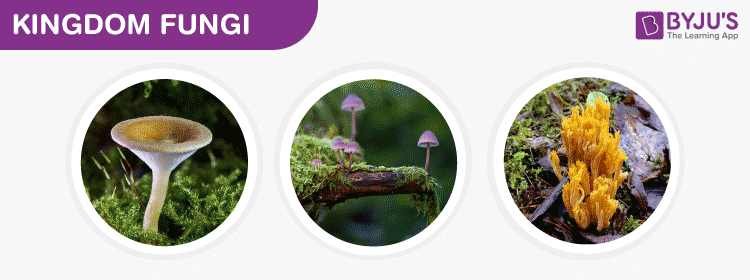A fungus (plural: fungi) are a group of eukaryotic organisms, which are grouped into a separate kingdom based on their physical features, i.e. they are neither plants nor animals and are members of Kingdom Fungi. Mycology is the branch of Biology, involved with the study of fungi, their physical features, their unique relationships with other organisms and their applications.

Altogether, there are around 1,44,000 species of fungi, which includes yeasts, mushrooms, rusts, moulds, mildews and so on. Fungi are the most free-living microorganisms, which are found living in both land and aquatic habitat. They are found everywhere in the environment, including air, water, soil, near water bodies, riverbanks, lakes, seas and also on plants, animals, clothing, etc.
The word fungus is derived from the Greek word, which refers to a sponge. Fungi are the most widely scattered organisms around the world. These microbes have great importance to human beings.
Explore more: Kingdom Fungi
Recommended Video:

Sexual Reproduction in Fungi
During the process of sexual reproduction, a huge number of sperms are produced from the parents’ body. The produced sperms disperse either floating on the wind or hitching a ride on an animal, as they are lighter and smaller than the seeds. The dispersed sperms land in an environment that will support their growth.
In fungi, sexual reproduction frequently takes place under unfavourable environmental conditions. Based on the mating types, they are classified into two types:
- Homothallic – When both mating types are present in the same mycelium. It is also called self-fertile.
- Heterothallic – When both mating types are present in two different mycelium.
There are many variations in fungal sexual reproduction, which includes the following three stages.
- Plasmogamy: The fusion of protoplasm.
- Karyogamy: The fusion of nucleus.
- Meiosis: Cell cycle involved with the nuclear division.
This sexual mode of reproduction in fungi is referred to as teleomorph and are of four types:
- Ascospores
- Basidiospores
- Oospores
- Zygospores
This article concludes an introduction to sexual reproduction in Fungi. To know more about Fungi, their structure, features, life process, life cycle, other related topics and important questions, keep visiting our website at BYJU’S Biology.

Comments